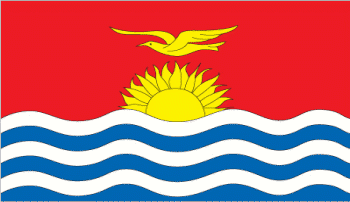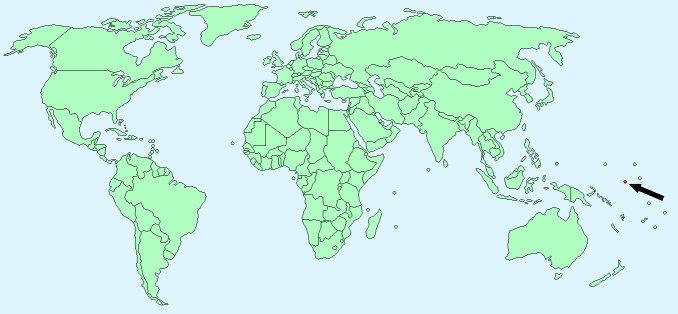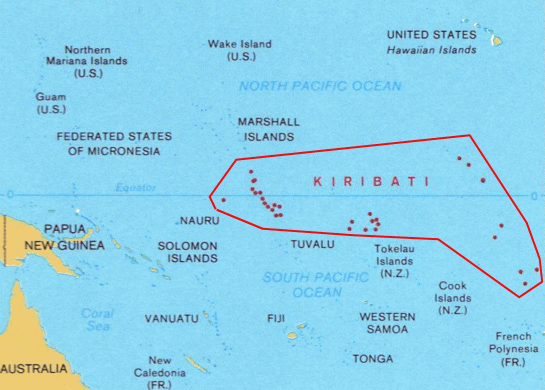Kiribati


Continent – Australasia
Region – Micronesia
Size – 811 km²
Geography – low-lying coral atolls surrounded by extensive reefs
Language – Kiribati and English are official languages
Religion – Roman Catholic 55.8%, Presbyterian 33.5%, Mormon 4.7%, Baha’i 2.3%, 7th day adventists 2%, other 1.7%
Monetary Unit – Australian dollar, Kiribati dollar
Natural Resources – phosphate
Agriculture – copra, taro, breadfruit, sweet potatoes, vegetables; fish
Industry – fishing, handicrafts

Neighbouring Countries – none collection of atolls
Population – 104,488 (2014 estimate)
Population Growth Rate – 1.18%
Average Life Expectancy – 65.47
Capital City – Tarawa (44,000)
Highest Mountain – No mountains
Longest River – None
Climate – Tropical – Hot all year 22°C to 28°C, temperature reduced due to trade winds
Yearly Rainfall – 90 cm (approx)
Plant Life – babai, coconut palms, breadfruit, bananas, yams, arrowroot, lemons, and sugarcane
Animal Life – no native animals. Those that have been introduced or found their way to Kiribati include lizards, snakes, and geckos
Marine Life – dolphins and whales, surgeonfish, clownfish, sailfish, puffer fish, butterfly fish, grouper, barracuda, tuna, snapper, bonefish, mackerel, marlin, mahi-mahi, shrimp, krill, crab, seahorses, manta rays, sharks, jellyfish, starfish, sea urchins
Bird Life – frigatebirds, doves, parrots, ducks, heron, terns, warblers, pigeons, and cuckoos
Harvard Reference for this page:
Heather Y Wheeler. (2015). Kiribati. Available: https://www.naturalhistoryonthenet.com/Facts_Figures/Country_Facts/kiribati.htm. Last accessed Monday, July 18, 2016
Facts and Figures Pages
